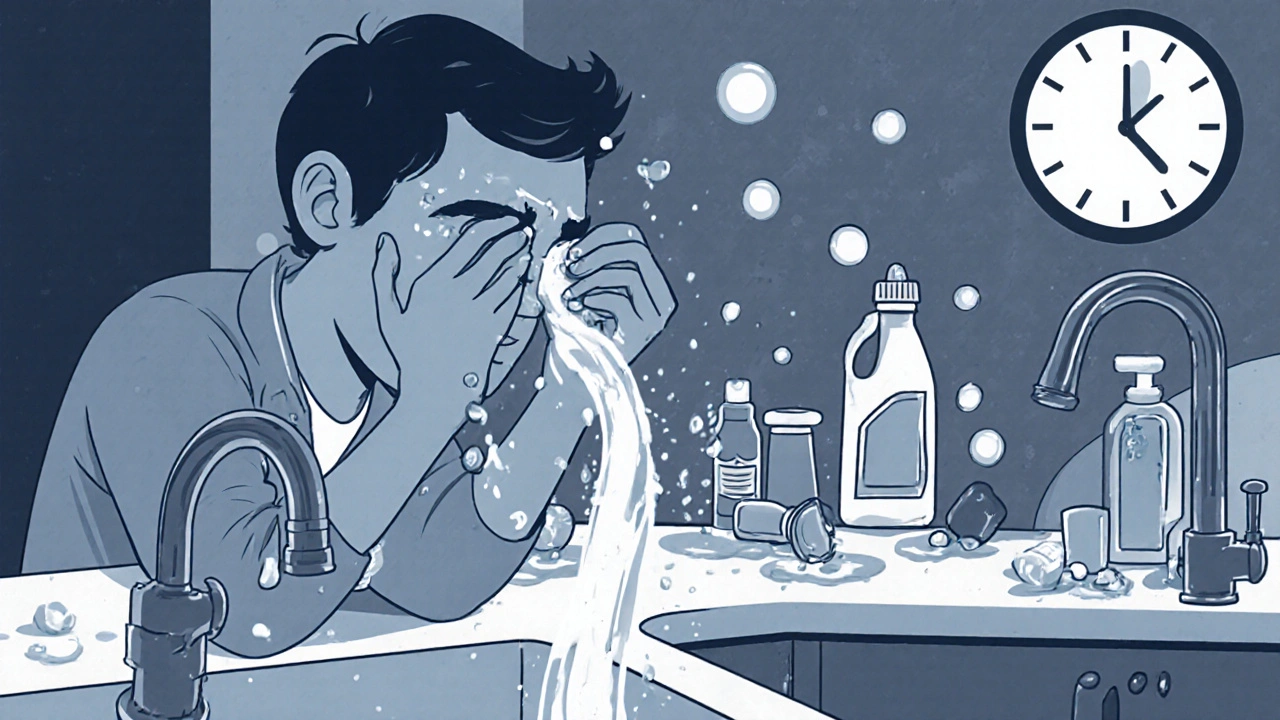When you hear alkali burn, a type of chemical injury caused by strong bases like lye, ammonia, or drain cleaners. Also known as caustic injury, it doesn’t just sting—it keeps eating through skin, eyes, and even bone if not treated fast. Unlike acid burns that often form a protective layer, alkali burns keep going deeper, turning tissue into soap-like sludge. That’s why they’re more dangerous than most people realize.
Common sources? Cleaning products, cement, oven cleaners, and even some hair relaxers. A splash in the eye from drain cleaner can blind you in minutes. Spilling lye on your hand during home renovation might not hurt right away, but by the time you feel it, the damage is already spreading. First aid, the immediate step of flushing with water for at least 20 minutes. Also known as emergency irrigation, it’s the single most effective way to stop the burn from getting worse. Don’t wait for pain. Don’t use vinegar or lemon juice to "neutralize" it—that’s a myth. Water is the only thing that works.
Tissue damage, the lasting harm caused by alkali penetrating skin layers and nerves. Also known as deep chemical injury, it often needs surgery, skin grafts, or long-term rehab. Hospitals treat these burns differently than thermal burns. They check for systemic toxicity, especially if swallowed. Kids and older adults are at higher risk because their skin is thinner or slower to react. Even small exposures can lead to scarring, vision loss, or chronic pain if handled wrong.
What you’ll find in the posts below aren’t just general guides—they’re real, practical breakdowns of how chemicals interact with the body, how to recognize hidden dangers in everyday products, and what steps actually save lives. You’ll see how drug interactions can complicate recovery, how monitoring helps prevent long-term damage, and why some treatments fail because people don’t know how alkali burns really work. No fluff. No guesses. Just what you need to know before, during, and after an accident.

Chemical splashes in the eye require immediate, continuous flushing with water for at least 20 minutes. Acting fast can save your vision-delaying even a few minutes increases the risk of permanent damage. Know the right steps to take before help arrives.